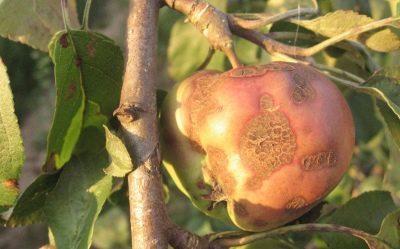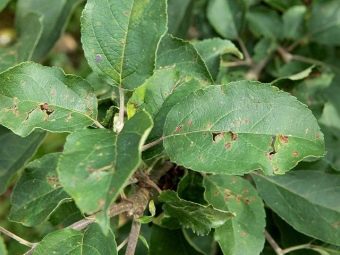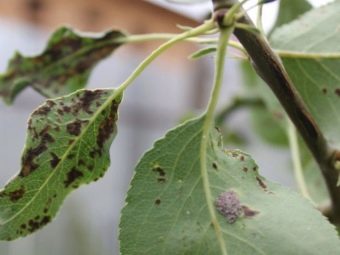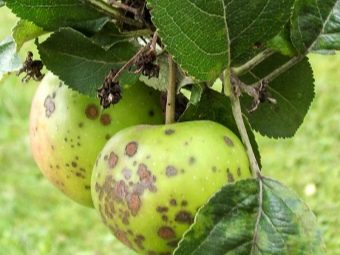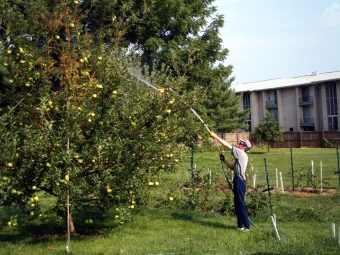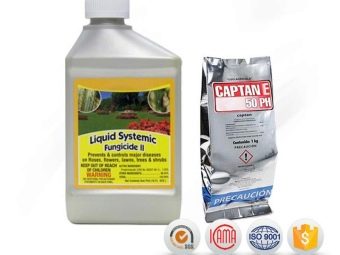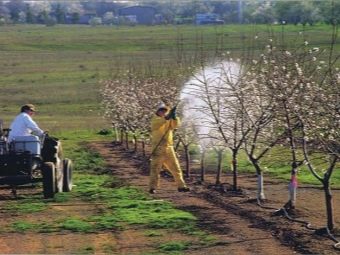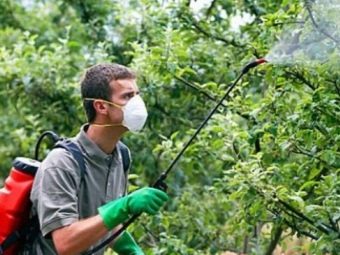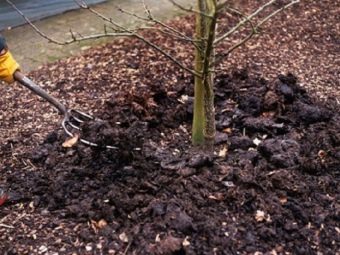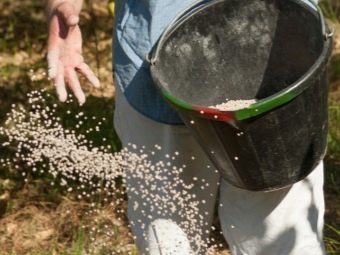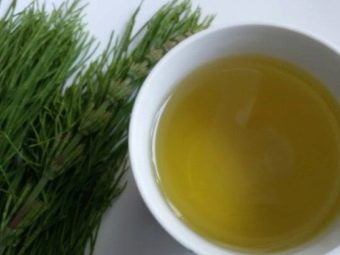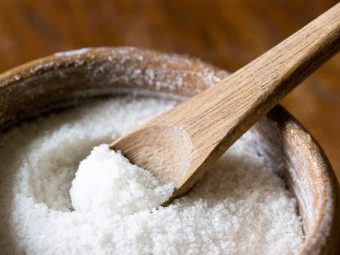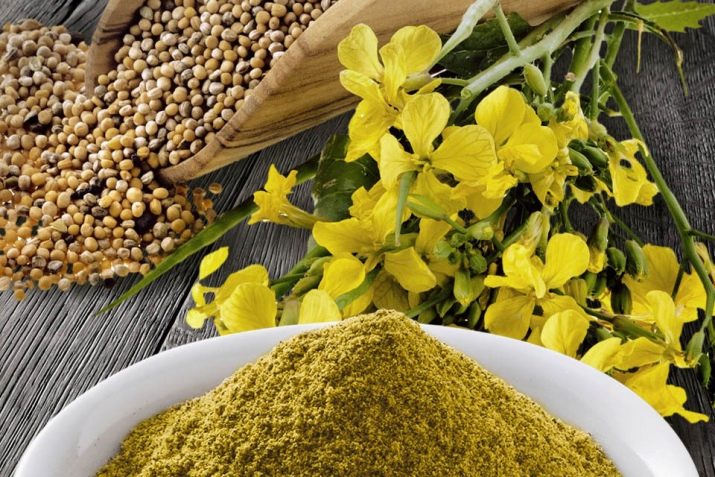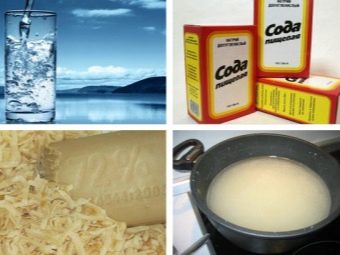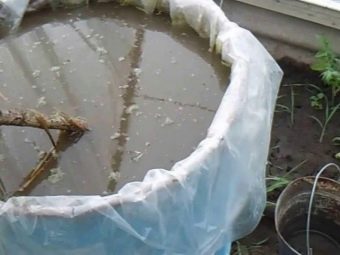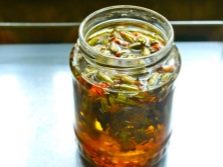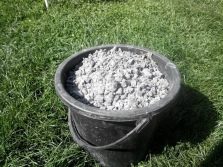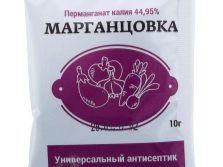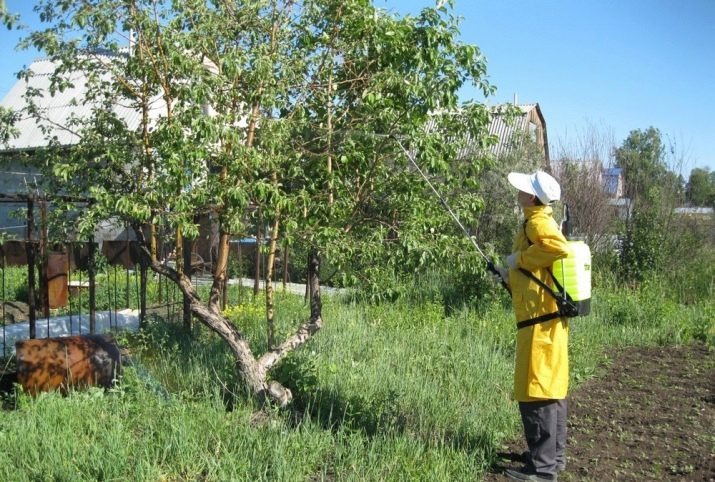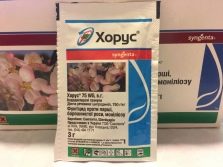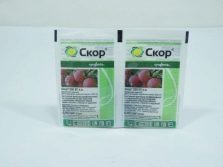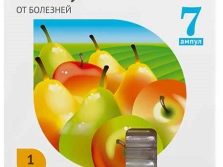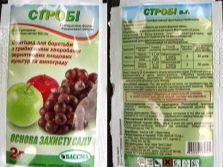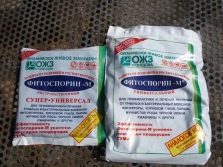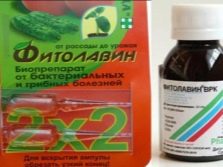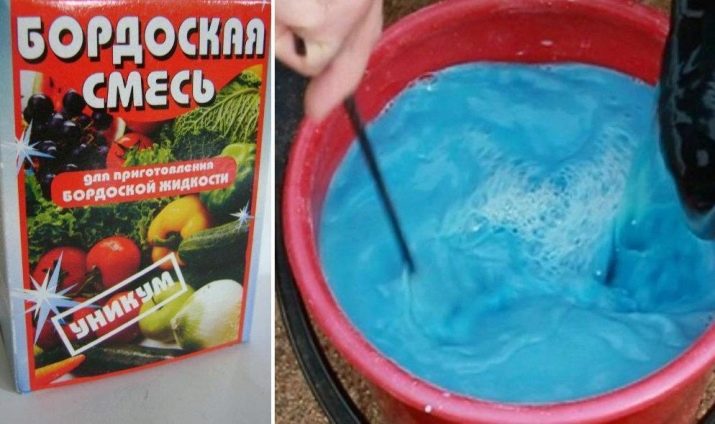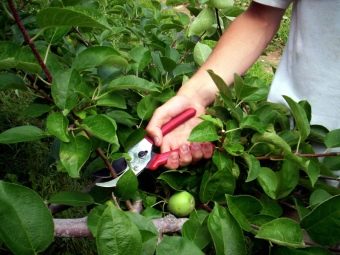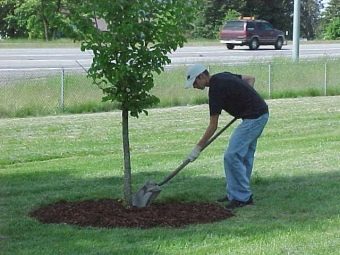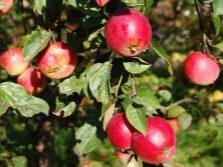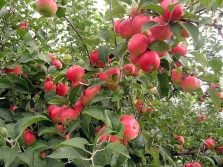Apple scab: features of the disease and methods of treatment

Scab is one of the most common diseases of apple trees and is well known to both experienced gardeners and novice gardeners. The disease is not detrimental to the culture and is effectively cured.
Description of the disease
Scab is a fungal disease caused by the spores of the marsupial fungus Venturia Inaequalis. The virus infects the fruit, flowers, and green mass of the plant, including the buds, leaves, and young shoots. The area of spread of the disease is quite wide. Scab is found in all regions of Central Russia, as well as in northwestern and even southern regions. However, apple trees growing in a temperate zone with a cool, wet spring and high rainfall during the summer months are considered to be the most vulnerable to attacks by the virus.
The fungus becomes the most active and viable at a temperature of 5-25 degrees, therefore infection usually falls on the beginning-middle of May. Disputes very well tolerate the effects of aggressive environmental factors and calm winter in the fallen leaves. With the beginning of spring, the fungus awakens and with new forces begins to hit the apple trees. The spread of the dispute occurs through rain and wind, which contributes to the rapid defeat of more and more new trees. The incubation period for scab is 8 to 20 days.
The first visual signs of the disease appear after 20-25 days from the moment of infection and manifest themselves in discoloration of young shoots, loss of elasticity of the shoots and their drying. The leaves are first covered with velvety olive bloom, and at the next stage of the disease - light brown spots, and fall. Adult branches do not spare the disease: over time, deep cracks and pits begin to form on them. The fruits of this period look very ugly. Apple peel is covered with dark brown spots and begins to crack.
When the disease is neglected, apples lose their taste, shrink and fall off early. The cunning of the disease consists in the fact that even after full recovery, the tree will produce ugly and tasteless fruits for three years.
Causes
One of the reasons for the appearance of the disease is a favorable environment for the growth and development of fungi. The emergence of scab contribute to abundant dew and frequent rainfall. Most of the trees fall ill in early May, due to low temperatures and dampness. However, the defeat of the apple tree can occur not only in the spring months: trees can become infected at the beginning of summer, during the period when there is an active formation of green mass and ovaries.
In addition to natural and climatic factors, low resistance of the variety to fungal diseases, violation of the tree planting pattern, expressed in too close arrangement of two neighboring apples, as well as too dense crown and poor ventilation of the site can be causes of scab Among the indirect reasons are the change in the phytopathological situation, the neglect of zoning varieties and the change in the composition of fungicides.
Seasonal features of making drugs
Fungal diseases are treated throughout the growing season, including the summer and autumn months. However, the choice of the active substance and processing technique depends largely on the time of the start of treatment.
Summer
Spraying can be carried out both during the flowering period and during the pouring of the fruit and continue until their collection. In the summer months they try to use biological preparations or make do with folk remedies. This is due to the risk of accumulation of chemicals in the fruit and the likelihood of a negative effect of fungicides on the green mass of plants. Besides, Strong chemicals can cause burns on leaf sheets and ovaries.
One of the most suitable for summer use of funds is “Captan”.The drug is a light powder and diluted with water in a proportion of 0.5 kg / 100 l. The resulting volume is usually enough to process 8-10 trees. The active phase of the drug is 5 to 7 days, after which the protective functions of the composition weaken and the trees need to be processed again.
"Captan" is one of the few drugs that can be processed during the ovary and fruit growth. In July-August, if necessary, up to 6 sprays can be carried out.
In the spring
Most of the preventive and therapeutic treatments fall in the spring months. This is due to the prevention of the appearance of the disease and the need to destroy the overwhelming dispute. In addition, the first signs of scab appear on the leaves of plants, the appearance and active growth of which also occur in the spring. The main condition for spring spraying is to meet the timing of their conduct with a focus on the beginning of flowering plants.
During flowering, the use of many drugs, especially chemicals, is unacceptable. Violation of this prohibition may lead to a drop in color and the loss of most of the crop. The resumption of treatment begins after 3 weeks at the end of flowering, in a period when the ensuing fruits will become clearly visible.
In the autumn
Crop apple trees in the fall begin after the entire harvest is harvested. During this period, the most effective way to combat apple scab is the collection and burning of fallen fruits and leaves, as well as the introduction of mineral supplements and biological agents.
Overloading plants with chemicals during this period is not recommended. This is due to the need to prepare the trees for wintering as best as possible and to allow them to make the largest possible supply of nutrients.
How to treat?
When detecting the first signs of scab, do not panic. The disease is well treated, and in the case of timely detection and immediate action does not leave behind a critical impact. There are many ways to combat fungal diseases. Conventionally, they can be divided into three large groups: treatment with the help of folk remedies, the use of chemicals and the application of mineral fertilizers.
Folk remedies are widely used in the fight against fungal diseases and are especially effective in the early stages of the disease. The use of biological and improvised means does not give such a quick effect as the use of chemicals, but does not harm the environment and man.
Effective use of the infusion of horsetail and table salt was previously considered quite effective. However, over time, the fungus stopped responding to horsetail, which is most likely due to its ability to adapt to the environment.
The use of salt also lost its popularity over time. This is due to too much soil salinization during this treatment. Many summer residents, comparing the risks and benefits of this method, safely abandoned it. Below are a number of folk remedies that can quickly and effectively deal with the disease.
- Mustard powder It is an old proven remedy and is widely used both as a medicine and as a preventive measure. The first treatment with mustard solution is made in the last days of May immediately after the appearance of the first leaves. The second - in the middle of June, before the blooming of flowers. The third spraying is performed in July after the appearance of the first ovaries and is carried out as a preventive measure, however, when infected with scab, it can be performed a little earlier. The fourth treatment is carried out 2-3 weeks before the harvest begins. In total for a season it is possible to spray a plant 5 times. Preparing a mustard solution is very simple: 100 g of powder is poured with a bucket of warm water and thoroughly mixed.
However, when using mustard it is necessary to take into account that the agent is a fairly strong allergen, therefore, people with a predisposition to allergic reactions are better off using another method.
- Soap-soda solution used immediately after flowering trees. For its preparation, take 6 tablespoons of soda, mix them with a grated piece of laundry soap and pour in a bucket of warm water. Then mix thoroughly, ensuring complete dissolution of soap chips, then insist for half an hour and carry out spraying.
- Manure infusion Preparing as follows: in a twenty-liter bucket is placed a mullein in such a way that it takes up one fourth of the volume of the bucket. Then pour warm water and clean in a dark place. After two weeks, the solution is filtered, diluted with water in a 1: 2 ratio and the trees are processed.
- Marigold infusion also helps to deal with scab. For its preparation, you need to collect half a bucket of flowers, top up with warm water and remove for two days in a dark place. Then the infusion should be filtered and mixed with a piece of rubbed soap. Processing is done immediately after flowering, waiting for all petals to fall.
- Wood ash for the treatment of scab used in the form of decoction. To do this, take half a bucket of ash, the same amount of water and put it all on fire. Boil the ashes for an hour, then cool, add a piece of brushed laundry soap and mix. Processing can be carried out 15 minutes after preparation of the solution.
- Potassium permanganate also often used for the treatment and prevention of disease. The first treatment is made in early spring before the appearance of the first leaves, and is performed with a saturated bright pink solution. The second spraying is done in June, using a weak pale pink solution. Subsequent spraying is carried out if necessary with an interval of 2 weeks. It is necessary to spray means not only on a trunk and krone, but also on radical space of the soil, and also the next trees and bushes.
From the use of potassium permanganate, the bark of the apple tree acquires a dark brown color and becomes covered with uneven divorces. This phenomenon should not cause any concerns, since it has no effect on the health and condition of the tree.
Chemicals are starting to be used only in cases when the use of popular methods does not bring proper results. However, with the defeat of young plants, as well as with the rapid development of the disease, the application of fungicides is made immediately, bypassing the treatment with folk remedies. Processing apples with chemicals should be carried out in strict accordance with the instructions for the use of drugs, as well as using personal protective equipment and personal safety rules.
In addition, you should know that only personal hazard classes 3 and 4 are allowed to use drugs of personal and family farms and country gardens. Funds belonging to classes 1 and 2 are strictly prohibited to use.
Spraying should be done only in calm weather with no dew or rain on the leaves.
The most effective drugs to help combat the spread of the fungus are a number of fungicidal agents capable of eliminating spores from the outside of the plant, as well as from the inside, as well as those that do not lose their properties after rain.
- Fungicidal composition "Raek" characterized by the ability to quickly penetrate plant tissue and affect fungal spores. The tool has a prolonged action, so that the health of an apple can not worry for a few years. Treatment with the drug is performed four times per season: the first time - at the time of bud formation, the second - 2 weeks after the first, third and fourth times - with a frequency of 4 weeks after the second.Means is not washed off by a rain, and the effect remains within a month after putting structure.
- "Fast" It also quickly penetrates the living tissue of the plant and is able to block the growth and development of spores within 2 hours after application. The composition can be used no more than three times per season, but when buying it is necessary to take into account that this tool is effective only at the initial stage of the disease and when the forms are neglected, it is often powerless.
- "Horus" also has limitations on use and is effective only for young trees. Treatment with the drug can be done no more than two times per season: after the appearance of the first leaves and a week and a half after the first spraying.
- "Strobe" It is a universal preparation of a broad spectrum and is able to fight almost all types of fungal diseases. Trees can be processed at any stage of their growth and development, including the flowering and budding phase. However, the final spraying should be done at least 45 days before the expected start of the harvest. Therefore, if the question is, how to cure an apple tree from scab, then it is better to give preference to this composition.
- Fitolavin is an antibiotic that effectively fights many fungal diseases, including scab. And although the drug is ecologically the safest of all fungicides, it can be sprayed no more than 4 times per season. The therapeutic effect of the use of the composition is maintained for 3 weeks, after which for a long time the plants are protected from re-infection. Final processing "Fitolavinom" can be carried out just a week before the start of the collection of fruits. However, with frequent use of the product, fungi and bacteria quickly get used to it and the use of the drug becomes ineffective.
- "Fitosporin" It is a microbiological preparation of a new generation and is used for the quick and effective destruction of fungi and bacteria in all fruit trees and vegetable crops without exception. The tool belongs to the class of bacterial fungicides and biological pesticides and is considered one of the safest and most effective drugs. You can use the composition at any stage of the growing season, including flowering and fruiting, and in any weather. The frequency of processing is usually 2 times a month, and spraying can be carried out throughout the season.
Bordeaux mixture is also widely used by gardeners and helps plants get rid of scab. The treatment is carried out at the very beginning of spring and is carried out very abundantly: the applied preparation must drain from the trunk and branches. After spraying, the tree acquires a bluish bloom, due to which the people received this procedure called “blue irrigation”. From the time the buds swell to the moment of harvest, the liquid can be applied 6 times. Spraying with Bordeaux mixture should be stopped 2 weeks before the apples are harvested.
You can prepare Bordeaux liquid yourself. To do this, you need 100 grams of copper sulphate and pour 10 liters of water, and in a separate container to extinguish the lime. To do this, put in a bucket 200 g of the substance and pour 5 liters of water. After the lime is extinguished, it should be poured into a solution of copper sulfate and mix thoroughly. The resulting composition will be a 1% solution of Bordeaux mixture.
The tool is applied foliar way and should cover the aboveground part of the tree completely.
Mineral fertilizers are widely used to treat scab and are especially effective in the early stages of the disease. Unlike chemical and folk remedies, supplements are made both by root and extra-root methods, and have a beneficial effect on the condition and composition of the soil. The introduction of urea and ammonium nitrate is considered the most effective method.Both drugs destroy the focus of fungal infection, increase the immunity of apple trees and nourish them with beneficial substances.
Urea is used to treat scab and is applied as a solution. Preparing the tool is very simple: 700 g of substance is poured with a bucket of water, after which spray is immediately carried out. The drug is applied by spraying, which is recommended in late autumn. Not only stem and crown, but also leaves and fruits fallen from the apple tree are subject to processing. Ammonium nitrate is diluted at the rate of 30 g per 10 liters of water and sprayed on plants in early spring. The number of autumn dressings include the introduction of potassium salts. Thus, potassium chloride is diluted in a proportion of 20 g per 20 liters of water, and potassium sulphate - 20 g per 30 liters.
Preventive measures
Often the disease is easier to prevent than to spend time and energy on its treatment. Therefore, preventive measures to prevent the appearance of scab should be given maximum attention. The best preventive measures against fungal diseases is careful selection of inoculum. Apple seedlings are best purchased in large and well-established nurseries, where a full range of measures are taken to protect plants from diseases and pests.
Should also fertilize regularly and maintain optimum acidity and soil moisture. Soils with excessive acidity often lack nitrogen, which leads to a decrease in plant immunity. In this regard, the application of nitrogen fertilizers should be a mandatory annual procedure, and to reduce the acidity, it is necessary to sprinkle 100 g of lime per square meter on the ground and dig up. At the slightest suspicion of the disease, it is necessary to immediately cut the affected branches and burn them. The foliage that has fallen during the period of illness of the plant is subject to burning. In this case, the spacing and pristvolny circles are spilled with a solution of potassium permanganate and dug several times.
When introducing fertilizers and additives, one should know that excessive application of potassium-phosphorus preparations can lead to their excess in the soil and reduce the resistance of the apple to the appearance of fungus. Therefore, when feeding trees, it is necessary to strictly observe the recommended dosages and not to exceed the permissible norms.
Disease resistant varieties
The following varieties are the least susceptible to scab:
- "Bolotovskoe" differs in rare crown and sour-sweet fruits of yellow-green color;
- "Star" possesses high immunity and tolerates winters well;
- "Jonotan" resistant to scab at the biological level and is characterized by large and sweet fruits.
“Pepin Saffron”, “Anis” and “Antonovka” have also proven themselves well. But "Melba" and "Papirovka", by contrast, often get scab.
Scab on apple tree is quite well treatable. The main thing is to notice its occurrence in time and take timely steps to eliminate the disease.
About scab on apple and pear, the causes and methods of dealing with it, see the following video.

